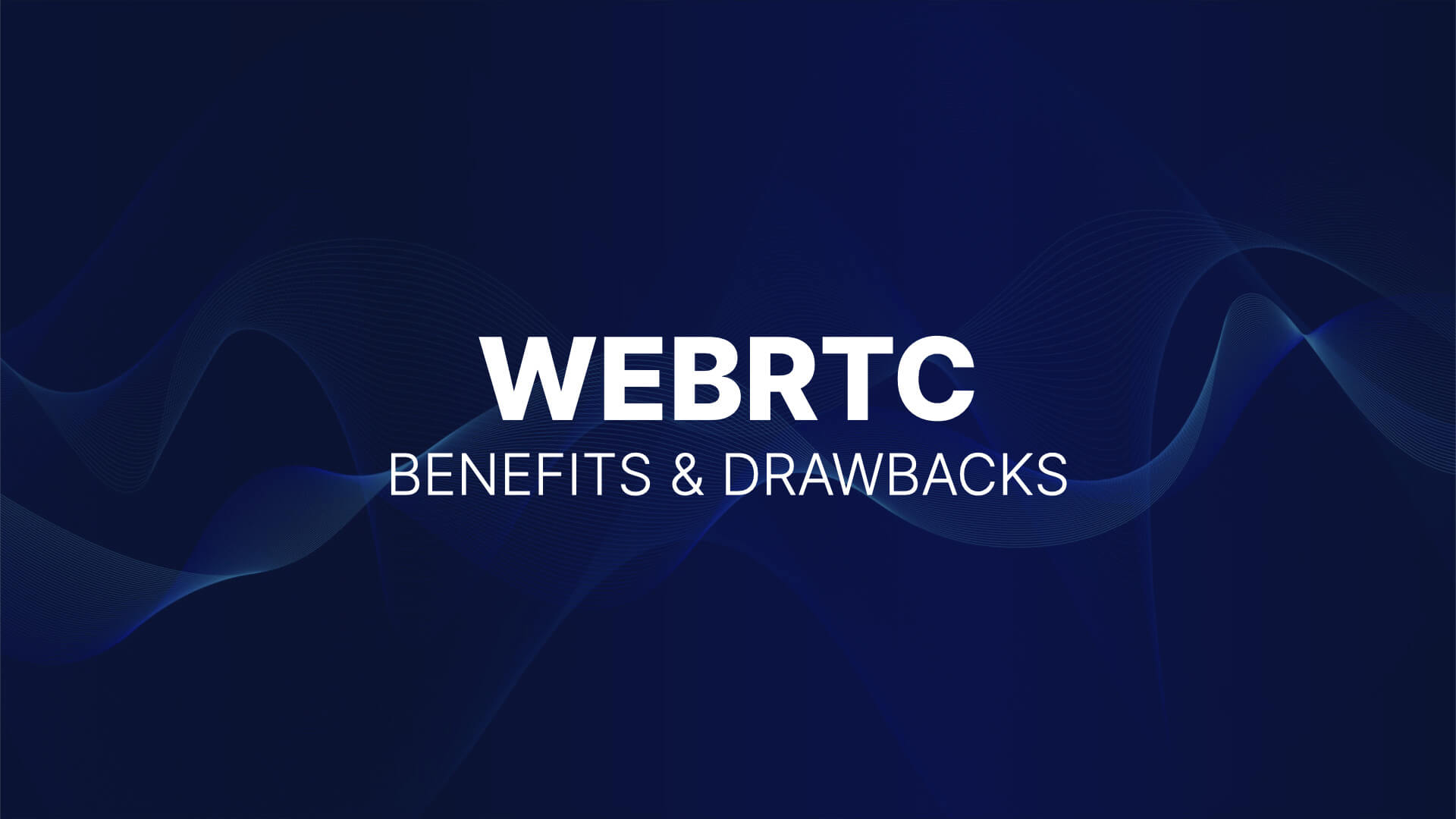The fastest browser-based live-streaming protocol
WebRTC, short for Web Real-Time Communication, is a streaming protocol supporting instant communication between browsers and devices. While there are even quicker methods of delivery created for cloud gaming and similar scenarios, WebRTC was built for teleconferencing over the public internet. The method was initially developed by Google and later released as open-source. Since its initial release, WebRTC has been broadly endorsed, which has yielded steady growth in deployment.
The unique selling point of WebRTC is the exceedingly fast delivery, meaning it serves video conferencing exceptionally well, together with any use case where instant delivery is of uttermost importance. Hence, the potential use cases stretch beyond online video calls to include live events and the Metaverse, among others.
Limitations of WebRTC – too fast?
Even though the technique holds promise, it is crucial to realize its limitations. Most importantly, WebRTC builds significant costs at scale. Furthermore, a latency of a few hundred milliseconds cannot uphold video qualities approaching 4K in a live stream without starting to either lag or buffer. This is particularly challenging in use cases where the geographical spread between viewers is large, or when network conditions fluctuate. In other words, the performance of WebRTC in delivering and sustaining HD video quality (720p) is rather solid. Beyond that, the conditions need to be optimal for WebRTC to uphold a robust delivery.
As video qualities constantly reach new dimensions, so do viewers’ expectations. And so does the barrier for WebRTC. Maintaining delivery at a satisfactory level will become increasingly challenging as 4K quality is expected. Live sports, entertainment, live shopping, live events, and many other verticals are reporting rising expectations among viewers for high-definition content. Consequently, there’s little proof supporting a future of live streaming where the industry-wide recognition for WebRTC persists.
Myth-Busting: WebRTC works on all networks
There’s a common perception and a frequently misused selling point that WebRTC does not need a CDN, or any similar infrastructure since its compatibility covers all networks. That’s not the case. Around one-third of the global networks do not support WebRTC. Companies in the process of evaluating different streaming solutions usually turn down WebRTC for this exact reason. Furthermore, the trade-off in quality to achieve real-time latency easily becomes a hurdle.
In contrast to the struggles of WebRTC, Vindral LiveCloud offers 4K video quality at sub-second glass-to-glass latency, with synchronized playout at full stability. For most use cases, this equals a significant advantage as Vindral LiveCloud adds full stability to the proposition.
The Vindral LiveCloud demo in 4K can be found here.
Quality is key

From live sports to remote inspections, audiovisual quality is more important than ever. Vindral LiveCloud enables crystal-clear experiences with unmatched stability, even for viewers on congested networks. Achieving quality retention, especially at 4K, marks a significant advantage over real-time solutions such as WebRTC. Vindral Live’s cutting-edge adaptive bitrate algorithm, together with the fully configurable buffer, provide unmatched resilience for live streams – unlocking 4K sub-second latency across the globe.
Compared to solutions based on WebRTC technology, Vindral LiveCloud provides a more resilient stream; with smoother playback and higher image quality. On non-perfect networks, such as mobile and WiFi networks, competing technologies struggle with frame drops, freeze frames, or display artifacts.


